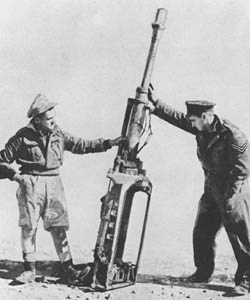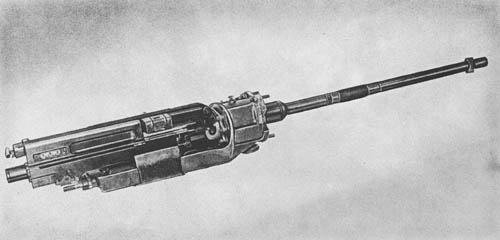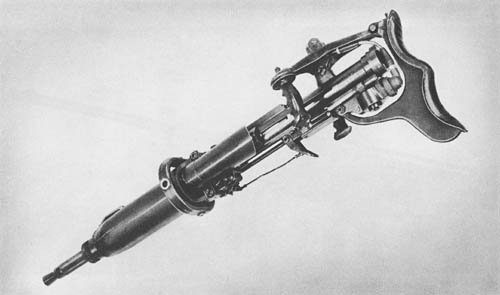
The Mk. 101, also known as the M.G. 101, is a scaled-up version of the Solothurn S-18-1000, 20 mm antitank rifle used by the Swiss, Italians, Hungarians, and to some small extent the Germans. It is Germany’s first attempt to put a gun of over 20 mm caliber in an airplane. It was designed to be used principally for antitank work, but a high-explosive round is furnished for antipersonnel use.
It has been used mostly on the Russian front in the Heinkel 129, a heavily armored plane especially designed for ground attack. Neither the Mk. 101 nor the plane has worked out too well, and a new 23 mm Mauser cannon and two new 30 mm guns, the Mk. 107 and Mk. 108, are now coming into use in the German Air Force.
In the Heinkel 129, the Mk. 101 was fixed to a mount that could be attached to the bomb racks under the fuselage when the plane was sent on a tank-hunting or other special mission. The gun is a recoil-operated, magazine- or drum-fed, semi- or full-automatic, air-cooled weapon. It does not have a particularly high velocity; the armor-piercing, high-explosive tracer ammunition gives a velocity of 2,330 f/s, and the light armor-piercing tungsten carbide-cored round, 2,800 f/s.
SPECIFICATIONS
| Caliber | 30 mm (1.18 ins.) | |
| Operation | Recoil | |
| Feed system | 10- or 20-round box magazine; 30-round drum | |
| Weight | 394 lb. (without mount) | |
| Length | 96 ins. (overall) |
German: p. 253




